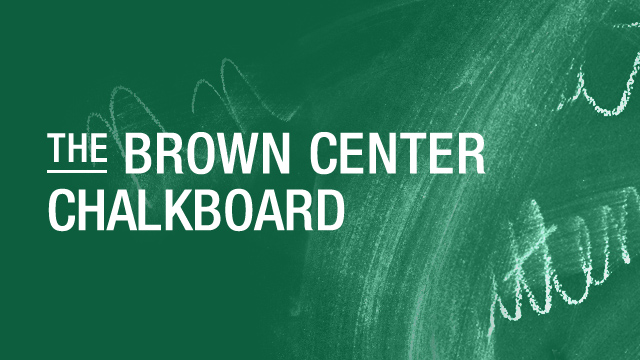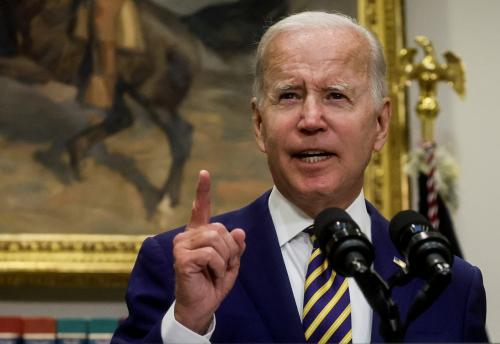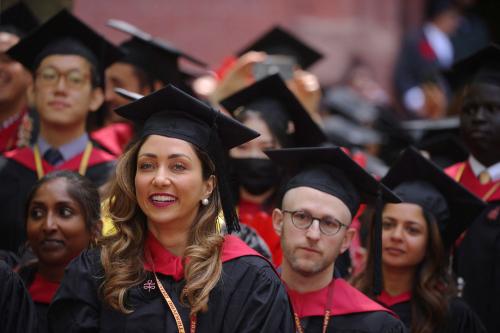Postsecondary education increases earnings and has been associated with non-pecuniary benefits for degree earners as well as their communities. However, in the face of rising college sticker prices, ballooning student debt, and an uncertain economy, prospective students and policymakers have increasingly questioned whether college is worth the costs, especially if students take out loans. Indeed, given the large increase in student debt and the various hardships associated with this debt, policymakers and stakeholders—including the Federal Reserve Bank of New York—have asked if college is still worth the costs. Thus, it is important to reevaluate the return on investment (ROI) for postsecondary education. Moreover, given the variation in the amount of loans, as well as earnings premiums across degree levels, it is important to understand the ROI across the postsecondary education continuum.
We set out to assess whether college is still worth it, financially. In doing so, we examined both the benefits and costs of postsecondary education. We find that when we account for student debt payments, degree holders still outearn those who do not complete a degree by an average of $8,000 a year.
New evidence from a study linking college records and credit data
In newly released research, we create a novel measure of debt-adjusted earnings using earnings and student debt data from a large credit bureau. Debt-adjusted earnings provide a more complete picture of the returns to college by accounting for additional student loan payments that students incur. We calculate our measures separately for sub-baccalaureate, undergraduate, and different graduate degree levels, and by field of study. Moreover, since the returns to postsecondary education can vary across institution type and selected major, we match completers with similar non-completers attending institutions in the same region and pursuing the same major (using data from the National Student Clearinghouse). This provides the most direct measure of the economic returns to degree completion.
In general, we find that postsecondary education has returns that far exceed the costs. On average, completers earn roughly $10,400 per year more than similar non-completers. Using our debt-adjusted earnings, this drops to roughly $8,000. These debt-adjusted earnings premia are substantial, but it’s worth noting that student debt is substantial, too. The difference between the average earnings returns with and without the debt adjustment implies students are spending 23% of their increased earnings on student loan payments. Within the relatively short window of our analysis, we do, however, see that graduates spend a smaller share of their additional earnings on student loan payments over time. This is mostly due to increased earnings among completers.
Figure 1 presents our estimated earnings premium and the observed average earnings for completers across degree types.
A few findings stick out. First, we confirmed what our previous research has shown: More education generally leads to a bigger paycheck. Master’s degrees provide the highest average earnings and gross earnings premium, followed by bachelor’s degrees and then associate’s degrees. But when we looked at student loan payments compared to that extra income, the story gets more interesting. The proportion of the earnings premium that goes to student debt varies significantly by degree level. Graduates with an associate’s degree spend only 9% of their extra earnings on loans, while bachelor’s degree holders spend 19%. For master’s degrees, this figure jumps to 57%, representing a substantial financial drag. Importantly, this initial drag on earnings for master’s graduates may be shorter-lived. We find that their steeper salary growth allows them to close the gap between their gross income and debt-adjusted income more rapidly.
The policy implications of a strong ROI for attending college
Our research demonstrates that while student loans can limit the earnings premiums associated with postsecondary education, postsecondary education is, on average, still a worthwhile financial investment. We believe that policymakers should consider maintaining and, in some cases, expanding student loan opportunities, because debt-adjusted earnings are substantially higher when one completes postsecondary education. Perhaps student loans should expand to include non-degree credential programs as well, since we find suggestive evidence that debt-adjusted earnings are more than $5,000 higher when completing an undergraduate certificate program. Furthermore, as debt-adjusted earnings for graduate education were among the largest that we measured, policymakers could look to expand student loans to graduate students.
However, the One Big Beautiful Bill Act (OBBBA) moves the country in a very different direction. It curtails loan opportunities by, for example, instituting borrowing caps on federal loans for graduate and professional degree programs—perhaps the borrowers most poised to fully pay back their loans. OBBBA also expands the Biden-era “gainful employment” rule to eliminate access to federal student aid for degree programs in all colleges and universities whose graduates fail to earn more than non-graduates’ median earnings. Our research demonstrates that, on average, students meet these requirements, but debt-adjusted earnings vary considerably by industry. While few programs fall below this standard, some degree programs are more vulnerable to losing access to federal student aid than others.
Under OBBBA, borrowers with federal student loans issued on or after July 1, 2026 will have only one income-driven repayment (IDR) option: the new Repayment Assistance Plan (RAP). Here, borrowers will make federal student loan payments of between 1% and 10% of their monthly adjusted gross income (AGI), depending on AGI level and adjusted for number of dependents over a 30-year repayment period. The previous income-based repayment (IBR) plan—which will eventually be shuttered and unavailable to new borrowers—had shorter repayment periods, which can be beneficial to low-balance borrowers seeking forgiveness. Under RAP, borrowers will have greater liabilities and 10 additional years during which saving, investing, and mortgage borrowing may be crowded out.
Increasing college affordability and completion
While postsecondary education appears to be a worthwhile investment if you complete the degree program, the burden of debt payments we observe can curb savings, homeownership, and even family formation (as we found in prior research). Thus, greater efforts should be made to increase college affordability. Our research also highlights the missed economic opportunities for those with non-degreed debt. It shows significant negative impacts of non-degreed debt on the material and financial well-being of these doubly disadvantaged individuals. Greater efforts should be made to increase college persistence to mitigate this burden. These efforts should focus on increasing persistence at ones’ current institution (e.g., through early warning systems and efforts to reduce unexpected hardships), as well as at alternative institutions (e.g., by making the transfer process easier to navigate). Finally, we need to make the costs and benefits of postsecondary education more transparent. That will help students make informed decisions about their economic futures.
The Brookings Institution is committed to quality, independence, and impact.
We are supported by a diverse array of funders. In line with our values and policies, each Brookings publication represents the sole views of its author(s).










